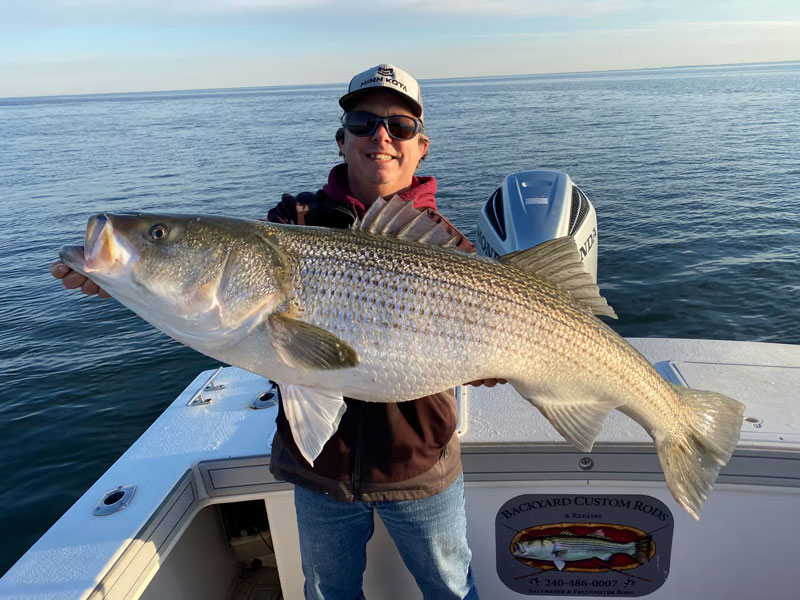This month we get into light tackle fishing tips with Captain Pete Dahlberg, better known as Walleye Pete, of Four Seasons Guide Service.

Q: An angler steps aboard your boat and says, “I love light tackle fishing and want to learn more about it.” What are the top three tips you’d give him or her?
A: Number one, never allow slack in the line while jigging, because slack line means missed hits. Number two, think about where the fish are in the water column and how to get your bait to them. You can’t catch fish if your lure isn’t near them. And number three, whatever bait you’re using always make it move in an erratic manner. Fish are attracted to movement, that lure has got to move.
Q: What are your three favorite lures?
A: BKDs, if one lure is going to be on the boat it’s a BKD because I can target any fish in the Bay at any depth with them. The Knock’in Paddletail is another one, along with swimming real nice they have a rattle built into the tail which draws attention… unless bluefish are around, and then it’s got to be a Z-man. I also like the Rapala X-Rap 10 and 12. These are very reliable when fish aren’t deeper than about eight feet.
Q: How do you know when to fish plastics, versus plugs, versus spoons?
A: I like to fish plastics when I’ve got experienced anglers slinging the lures, or if many fish are present and it’s relatively easy to get them biting. Also during catch and release times, because of the single hooks and the fact that they do less damage to fish. When fishing deep in cold water, plastics are by far the best to present a lure to schooled fish or migratory giants.
I like to fish plugs when fish are shallow or may be in deep water but are holding shallow in the water column. Plugs are also great over submerged shallow structure, or when working points with current and a deeper trough.
Spoons are the choice mainly in water over 20’ when fish are schooled up under the boat, or if I see fish glued to bottom and plastics won’t entice a strike. A vertically jigged spoon makes it easy to detect bottom, and that means it’s easy to get that lure right in front of fish that are hugging bottom. Also, spoons are great for throwing to schooled bluefish, Spanish mackerel, and redfish that are near the surface.
Q: Lots of anglers like scented lures, or they add a scent to their lure. Give us your thoughts—does it help? A lot, or a little?
A: Scents… well this question comes up quite often. One thing almost for sure, it can’t hurt. Does it help? I’ve seen it seem to work at times with folks on my boat. I think if you’re more confident, you tend to catch fish better with or without scent. I will say though I’ve seen guys do better on black sea bass with scent on a vertical jig. I’ll stick with: it can’t hurt and it could possibly help.
Q: We hear that wind can stack bait on a shoreline, but we also know the windward shoreline can be churned up and choppy. How do you decide when to head for a leeward shoreline versus those hit by the wind?
A: I HATE wind! Let’s say clear water is a 10, zero visibility is a 0. When I see a lot of mud in the water, let’s say a 4, I may look at that water but almost all the time I catch nothing and see nothing on my Humminbird side imaging. If it’s blowing 15 to 20 into a shoreline it’s making mud fast and I’ll waste very little time in muddy water. If it’s blowing up into a shoreline it’s also more dangerous if you have an issue. I’m quick on the trigger to find protected water. With 25 years under the gun to catch, I don’t catch in windblown shore areas hardly ever.
Q: Open mic: what would you like to say to all the anglers out there?
A: Every year, month, day, and hour can be different on the water. Yesterday ain’t today and today ain’t tomorrow. Fish what mother nature gives you, not so much where you heard they were yesterday.
Thank you, Captain Pete! You can reach Walleye Pete at his website, by emailing [email protected], or by calling or texting (703) 395-9955.